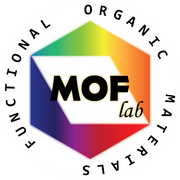MOF - Materiali organici funzionali
MOF - Functional Organic Materials
Componenti
- Barolo Claudia (Coordinatore/Coordinatrice)
- Quagliotto Pierluigi (Professore/Professoressa associato/a)
- Barbero Nadia (Professore/Professoressa associato/a)
- Fin Andrea (Professore/Professoressa associato/a)
- Cardano Francesca (Ricercatore/Ricercatrice)
- Benesperi Iacopo (Ricercatore/Ricercatrice)
- Galliano Simone (Ricercatore/Ricercatrice)
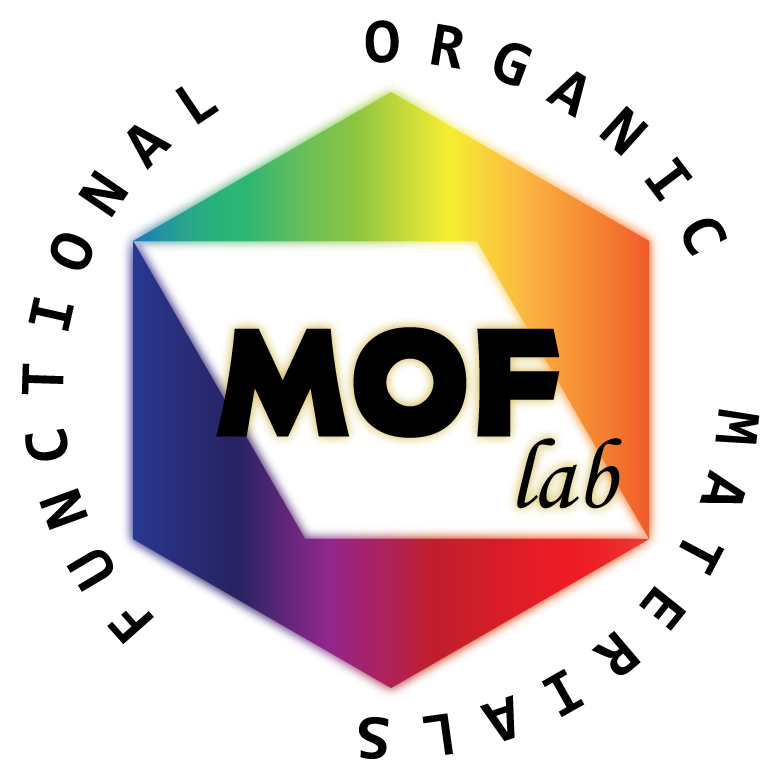
Settore ERC
Attività
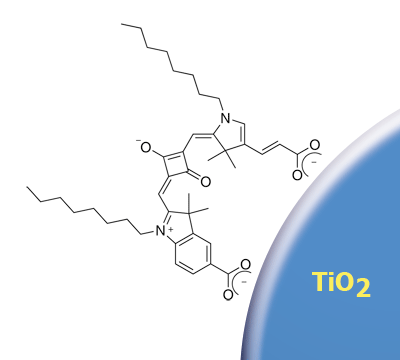 L'attività è focalizzata sulla sintesi e caratterizzazione di materiali funzionali per applicazioni High Tech:
L'attività è focalizzata sulla sintesi e caratterizzazione di materiali funzionali per applicazioni High Tech:
- sensibilizzatori organometallici o totalmente organici per Dye-sensitized Solar Cells (DSC);
- sonde fluorescenti e bioconiugati per lo studio di interazione fra biomolecole;
- sonde coloranti e fluorescenti per la funzionalizzazione di nanomateriali ossidici (sensoristica e imaging ottico) e per lo studio della funzionalizzazione superficiale di nanotubi di carbonio (drug delivery);
- tensioattivi cationici per gene delivery e come templanti per materiali nanoporosi;
- sintesi di intermedi e leganti in fase acquosa mediante reazioni catalizzate da palladio in ambiente micellare.
Sintesi Attrezzature e Strumentazioni
La sintesi è condotta con metodiche classiche e microonde per ottimizzare tempi e rese di reazione. La purificazione raggiunge gli standard di purezza cromatografica adeguati alle applicazioni innovative mediante cromatografia flash, MPLC ed HPLC preparativi.
La caratterizzazione strutturale è condotta mediante spettroscopie UV-Vis, FT-IR, 1H e 13C- FT-NMR e spettrometrie di Massa GC-EI, LC-MS (ESI ed APCI). L'individuazione delle proprietà funzionali delle molecole è condotta mediante spettroscopia di assorbimento e di fluorescenza statica e dinamica per i coloranti e misure di conducibilità, fluorescenza, tensione superficiale, angolo di contatto statico e dinamico per i tensioattivi. I sensibilizzatori per DSC sono testati in cella piccola sotto Sun Simulator e mediante le curve I-V.
Il gruppo è attrezzato con un plasma atmosferico per il trattamento superficiale di materiali attraverso etching e l'espressione di gruppi funzionali e film polimerici per il cui studio è disponibile un misuratore ottico di angolo di contatto. Studi cinetici e termodinamici di interazione fra biomolecole sono condotti mediante Stopped-Flow attrezzato di rivelatore UV e di Fluorescenza.
Preparazione di coloranti per applicazioni in celle solari DSC
La ricerca sui coloranti per DSC è concentrata sulle squaraine, molecole molto versatili, il cui assorbimento può essere modulato su un ampio range di lunghezze d’onda, dal visibile al NIR.
Le numerose strutture sintetizzate hanno dimostrato che le squaraine sono in grado di fornire buone efficienze di fotoconversione nelle celle DSC. Modifiche strutturali hanno permesso di ottenere notevoli miglioramenti dal punto di vista dell’efficienza fotovoltaica e della stabilità delle celle solari. Sono state preparate celle solari basate sul trasferimento di energia da quantum dots (QD) a squaraine, che agiscono come "molecular relay" nei confronti della titania, giungendo ad incrementare la resa fotovoltaica del 49%.
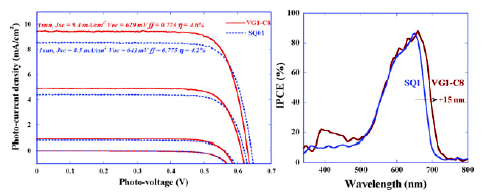
V. Gianotti, G. Favaro, L. Bonandini, L. Palin, G. Croce, E. Boccaleri, E. Artuso, W. Van Beek, C. Barolo, M. Milanesio Rationalization of dye uptake on titania slides for dye-sensitized solar cells by a combined chemometric and structural approach. ChemSusChem 2014, 7, 3039-3052. http://hdl.handle.net/2318/157820
C. Barolo, J.-H. Yum, E. Artuso, N. Barbero, D. Di Censo, M. G. Lobello, S. Fantacci, F. De Angelis, M. Grätzel, Md. K. Nazeeruddin, G. Viscardi A simple synthetic route to obtain pure transruthenium(II) complexes for dye sensitized solar cell applications. ChemSusChem 2013, 6, 2170-2180. http://hdl.handle.net/2318/139664
J. Park, N. Barbero, J. Yoon, E. Dell'Orto, S. Galliano, R. Borrelli, J.-H. Yum, D. Di Censo, M. Graetzel, Md. K. Nazeeruddin, C. Barolo, G. Viscardi
Panchromatic Symmetrical Squaraines: A step forward in molecular engineering of low cost blue-greenish sensitizers for Dye-Sensitized Solar Cells. Phys. Chem. Chem. Phys., 2014, 16, 24173-24177.
http://hdl.handle.net/2318/149365
L. Etgar, J. Park, C. Barolo, V. Lesnyak, K. Panda Subhendu, P. Quagliotto, S.G. Hickey, Md. K. Nazeeruddin, A. Eychmüller, G. Viscardi, M. Grätzel Enhancing the efficiency of a dye sensitized solar cell due to the energy transfer between CdSe quantum dots and a designed Squaraine dye. RSC Advances, 2012, 2, 2748-2752. http://hdl.handle.net/2318/101175
J.Park, C. Barolo, F. Sauvage, N. Barbero, C. Benzi, P. Quagliotto, S. Coluccia, D. Di Censo, M. Grätzel, Md. K. Nazeeruddin, G. Viscardi. Symmetric vs. asymmetric squaraines as photosensitisers in mesoscopic injection solar cells: a structure?property relationship study. Chem. Comm., 2012, 48 2782-2784. http://hdl.handle.net/2318/94579
Sintesi ed applicazioni di Tensioattivi
La ricerca sui tensioattivi ha riguardato principalmente la categoria dei tensioattivi gemini. In particolare i tensioattivi gemini contenenti l’anello piridinico hanno dimostrato comportamenti aggregativi inusuali, con formazione di coppie ioniche ed aggregati pre-micellari. Questi tensioattivi hanno dimostrato buona efficienza di transfezione cellulare, e l'insieme delle caratterizzazioni chimico-fisiche ha consentito di determinare relazioni struttura-proprietà. Solo i tensioattivi che riescono a formare lipoplex compatti di dimensioni limitate sono in grado di mediare efficientemente il trasferimento del DNA al nucleo cellulare (vedi figura sotto).
I tensioattivi gemini sono stati utilizzati anche per catalizzare l'idrolisi di esteri fosforici. In presenza di esteri "modello", questi tensioattivi hanno permesso di velocizzare la reazione di idrolisi in maniera significativa, fino a 10 volte rispetto ai migliori risultati di letteratura.
 |
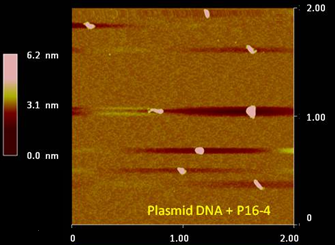 |
Visualizzazione tramite AFM dei lipoplex costituiti da DNA e un tensioattivo di tipo gemini.
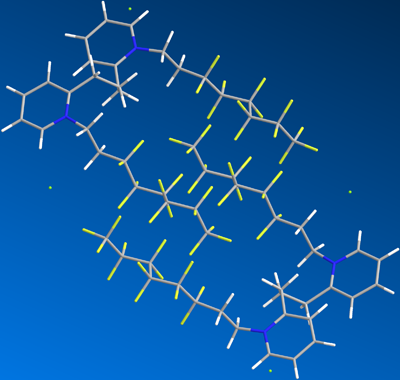
Modello di un dimero di tensioattivo gemini, punto di partenza dell'aggregazione premicellare.
E. Fisicaro, C. Compari, F. Bacciottini, L. Contardi, N. Barbero, G. Viscardi, P. Quagliotto, G. Donofrio, B. Rozycka-Roszak, P. Misiak, E. Wozniak, F. Sansone Nonviral Gene Delivery: Gemini Bispyridinium Surfactant-Based DNA Nanoparticles. J. Phys. Chem. B, 2014, 118, 13183-13191. http://hdl.handle.net/2318/151980
E. Fisicaro, C. Compari, F. Bacciottini, N. Barbero, G. Viscardi, P. Quagliotto Is the counterion responsible for the unusual thermodynamic behaviour of the aqueous solutions of gemini bispyridinium surfactants? Coll. Surf. A, 2014, 443, 249-254. http://hdl.handle.net/2318/140597
B. Kumar, D. Tikariha, M. L. Satnami, N. Barbero, P. Quagliotto, K. K. Ghosh Catalytic hydrolysis of phosphodiesters by nucleophilic ions in gemini micellar media. J. Phys. Org. Chem., 2014, 27, 613-621. http://hdl.handle.net/2318/148713
B. Kumar, D. Tikariha, K. K. Ghosh, N. Barbero, P. Quagliotto Kinetic study on effect of novel cationic dimeric surfactants for the cleavage of carboxylate ester. J. Phys. Org. Chem., 2013, 26, 626-631. http://hdl.handle.net/2318/138860
Sintesi organica in mezzo acquoso
Recentemente è stato intrapreso lo studio della reazione di Suzuki in ambiente acquoso micellare per ottenere intermedi e leganti basati su tiofeni che vengono collegati a piridine e oligopiridine.
Utilizzando tensioattivi cationici, varie tipologie di catalizzatori di palladio e riscaldamento tradizionale e a microonde sono state ottenute rese tra il 70 e il 93%, dimostrando la flessibilità del metodo e la sua applicabilità pratica. Gli sviluppi della ricerca coinvolgono l’utilizzo di fonti sempre più economiche di palladio, e l’abbassamento delle temperature di reazione.
P. Quagliotto, N. Barbero, C. Barolo, R. Buscaino, P. Carfora, S. Prosperini, G. Viscardi Water based surfactant-assisted synthesis of thienylpyridines and thienylbipyridine intermediates. Dyes & Pigments, 2017, 137, 468-479. http://hdl.handle.net/2318/1610315
The activity is focused on the synthesis and characterization on functional materials for High Tech applications:
- organometallic and/or fully organic sensitizers for Dye-Sensitized Solar Cells (DSC);
- fluorescent probes and bioconjugates for the study of interaction between biomolecules .
- dye and fluorecent probes for the functionalization of oxide nanomaterials (for sensors and optical imaging) and for the surface functionalization of carbon nanotubes (drug delivery);
- cationic surfactants for gene delivery e as templates for nanoporous materials.
- Synthesis of intermediates and ligands in water through Pd-catalyzed reactions in a micellar environment.
Synthesis, Equipment and Instrumentation
Synthesis are performed with classical and microwave heating to optimize reaction time and yield. The purification rwaches the chromatographic standard needed for the innovative applications, through Flash Chromatography, MPLC and preparative HPLC. Structural characterization is achived by Spectroscopy (UV-Vis, FT-IR, 1H-NMR, 13C- FT-NMR) and Mass Spectrometry (GC-EI, LC-MS, ESI and APCI). The evaluation of the functional properties i sperformed thorugh absorption and static and dynamic fluorescence spectroscopy, surface tension, static and dynamic contact angle fors rufactants. The DSC sensitizers, are tested on small cells under Sun Simulator and I-V curves.
An athmospheric pressure plasma is used for the surface treatment of materials through etching and the development of funtcional groups over the surface. The surface's nature can be evaluated by contact angle. Thermodynamic and kinetic studies for the interaction between biomolecules are eprformed by stopped-flow with both UV-Vis and Fluorescence detectors.
Synthesis of Dyes for application in DSC
The resarch on dyes fort DSC application is focused on squaraines, higly versatile molecules, whose absorption can be modulated over a wide wavelength range, from Visible to NIR. The high number of tstructures prepared showed that suqaraines can give good conversion efficiencies in DSC cells. Structural modifications helped to obtain further improvements from the photovoltaic efficiency point of view and about the solar cell stability. Quantum Dot-based celles were prepared, where the Quantum Dots are responsibile of the adsorption of the visibile light and squaraines can act as a molecular relay towards the titania, helping to improve the photoconversion yield of 49%.

V. Gianotti, G. Favaro, L. Bonandini, L. Palin, G. Croce, E. Boccaleri, E. Artuso, W. Van Beek, C. Barolo, M. Milanesio Rationalization of dye uptake on titania slides for dye-sensitized solar cells by a combined chemometric and structural approach. ChemSusChem 2014, 7, 3039-3052. http://hdl.handle.net/2318/157820
C. Barolo, J.-H. Yum, E. Artuso, N. Barbero, D. Di Censo, M. G. Lobello, S. Fantacci, F. De Angelis, M. Grätzel, Md. K. Nazeeruddin, G. Viscardi A simple synthetic route to obtain pure transruthenium(II) complexes for dye sensitized solar cell applications. ChemSusChem 2013, 6, 2170-2180. http://hdl.handle.net/2318/139664
J. Park, N. Barbero, J. Yoon, E. Dell'Orto, S. Galliano, R. Borrelli, J.-H. Yum, D. Di Censo, M. Graetzel, Md. K. Nazeeruddin, C. Barolo, G. Viscardi Panchromatic Symmetrical Squaraines: A step forward in molecular engineering of low cost blue-greenish sensitizers for Dye-Sensitized Solar Cells. Phys. Chem. Chem. Phys., 2014, 16, 24173-24177. http://hdl.handle.net/2318/149365
L. Etgar, J. Park, C. Barolo, V. Lesnyak, K. Panda Subhendu, P. Quagliotto, S.G. Hickey, Md. K. Nazeeruddin, A. Eychmüller, G. Viscardi, M. Grätzel Enhancing the efficiency of a dye sensitized solar cell due to the energy transfer between CdSe quantum dots and a designed Squaraine dye. RSC Advances, 2012, 2, 2748-2752. http://hdl.handle.net/2318/101175
J.Park, C. Barolo, F. Sauvage, N. Barbero, C. Benzi, P. Quagliotto, S. Coluccia, D. Di Censo, M. Grätzel, Md. K. Nazeeruddin, G. Viscardi. Symmetric vs. asymmetric squaraines as photosensitisers in mesoscopic injection solar cells: a structure?property relationship study. Chem. Comm., 2012, 48 2782-2784. http://hdl.handle.net/2318/94579
Synthesis and applications of Surfactants
The research on surfactants was mainly devoted to the gemini surfactant category. In particular, pyridinium gemini surfactants showed peculiar solution beaviour, by forming ion pairs and pre-micellar aggregates. These surfactants, showed a good efficeiny in cell transfection and the whole physico-chemical characterization was able to establish structure-property relationships. Only those surfactants that are able to form compact lipolexes are abel to efficiently mediate the DNA trasnfer to the cell nucleus (see figure below).
Gemini surfactants were also used to catalyse the phosphoric ester hydrolysis. Weoking in presence of model substrates these surfactants increased considerably the hydrolysis reaction, even 10 times with respect to the best results available in the literature.
 |
 |
AFM image of the lipoplexes obtained by gemini pyridinium surfactants and DNA.

Model of a dimer of a gemini surfcatant, the starting poing for premicellar aggregation.
E. Fisicaro, C. Compari, F. Bacciottini, L. Contardi, N. Barbero, G. Viscardi, P. Quagliotto, G. Donofrio, B. Rozycka-Roszak, P. Misiak, E. Wozniak, F. Sansone Nonviral Gene Delivery: Gemini Bispyridinium Surfactant-Based DNA Nanoparticles. J. Phys. Chem. B, 2014, 118, 13183-13191. http://hdl.handle.net/2318/151980
E. Fisicaro, C. Compari, F. Bacciottini, N. Barbero, G. Viscardi, P. Quagliotto Is the counterion responsible for the unusual thermodynamic behaviour of the aqueous solutions of gemini bispyridinium surfactants? Coll. Surf. A, 2014, 443, 249-254. http://hdl.handle.net/2318/140597
B. Kumar, D. Tikariha, M. L. Satnami, N. Barbero, P. Quagliotto, K. K. Ghosh Catalytic hydrolysis of phosphodiesters by nucleophilic ions in gemini micellar media. J. Phys. Org. Chem., 2014, 27, 613-621. http://hdl.handle.net/2318/148713
B. Kumar, D. Tikariha, K. K. Ghosh, N. Barbero, P. Quagliotto Kinetic study on effect of novel cationic dimeric surfactants for the cleavage of carboxylate ester. J. Phys. Org. Chem., 2013, 26, 626-631. http://hdl.handle.net/2318/138860
Organic Synthesis in Water
Recently, we started a study of the Suzuki reaction in micellar solution to obtain intermediates and ligands based on thiophenes linked to pyridines and oligopyridines.
Using cationic surfactanst, different Pd catalysts and conventional heating or microwave activation, products were obtained in 70-93% yield , thus demonstrating the flexibility of the method and its practical application.
P. Quagliotto, N. Barbero, C. Barolo, R. Buscaino, P. Carfora, S. Prosperini, G. Viscardi Water based surfactant-assisted synthesis of thienylpyridines and thienylbipyridine intermediates. Dyes & Pigments, 2017, 137, 468-479. http://hdl.handle.net/2318/1610315
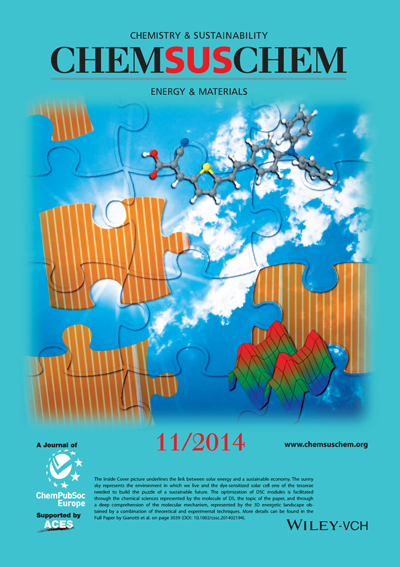
The Inside Cover picture underlines the link between solar energy and a sustainable economy. The sunny sky represents the environment in which we live and the dye-sensitized solar cell one of the tesserae needed to build the puzzle of a sustainable future. The optimization of DSC modules is facilitated through the chemical sciences represented by the molecule of D5, the topic of the paper, and through a deep comprehension of the molecular mechanism, represented by the 3D energetic landscape obtained by a combination of theoretical and experimental techniques. More details can be found in the Full Paper by Gianotti et al. on page 3039 (DOI: 10.1002/cssc.201402194).
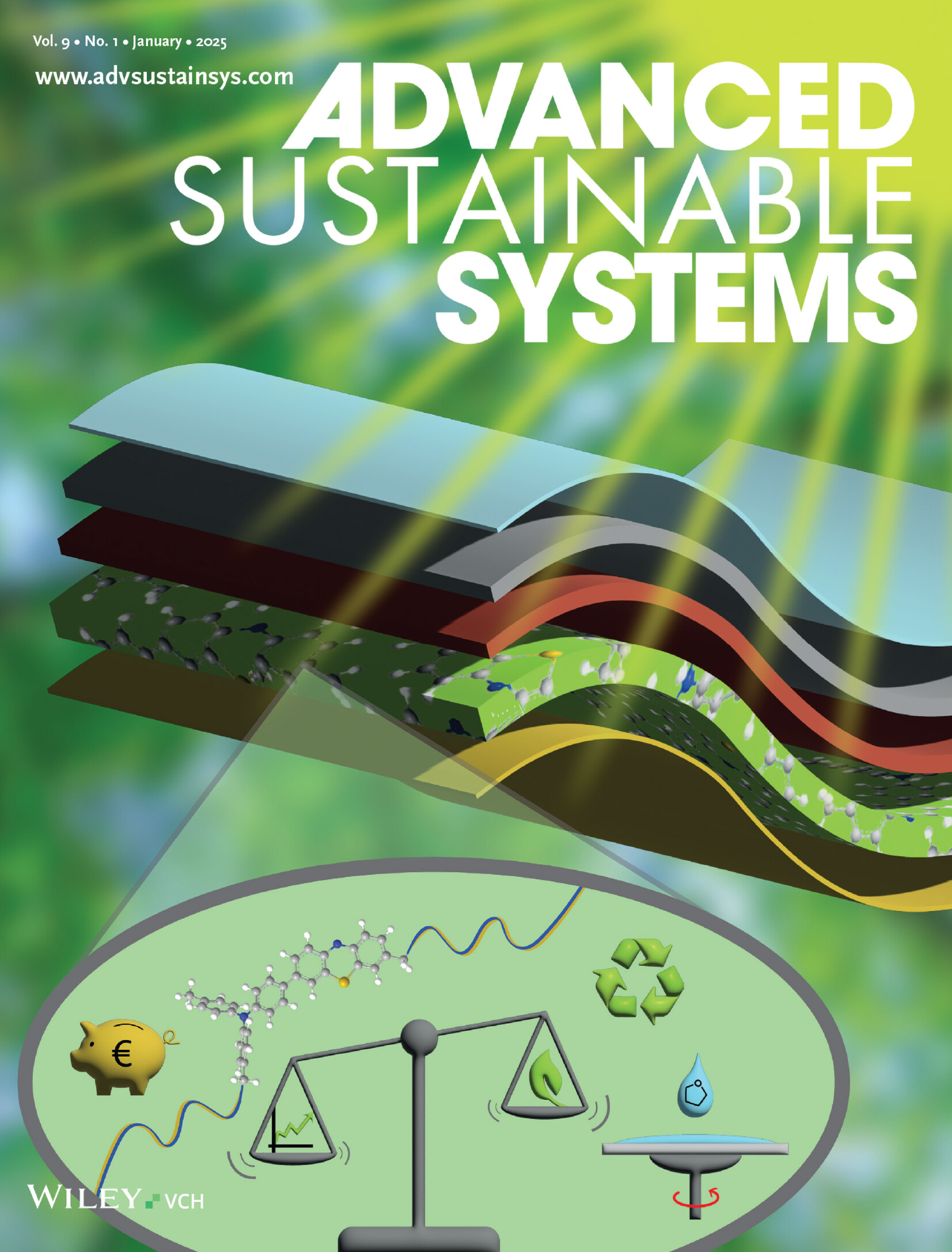
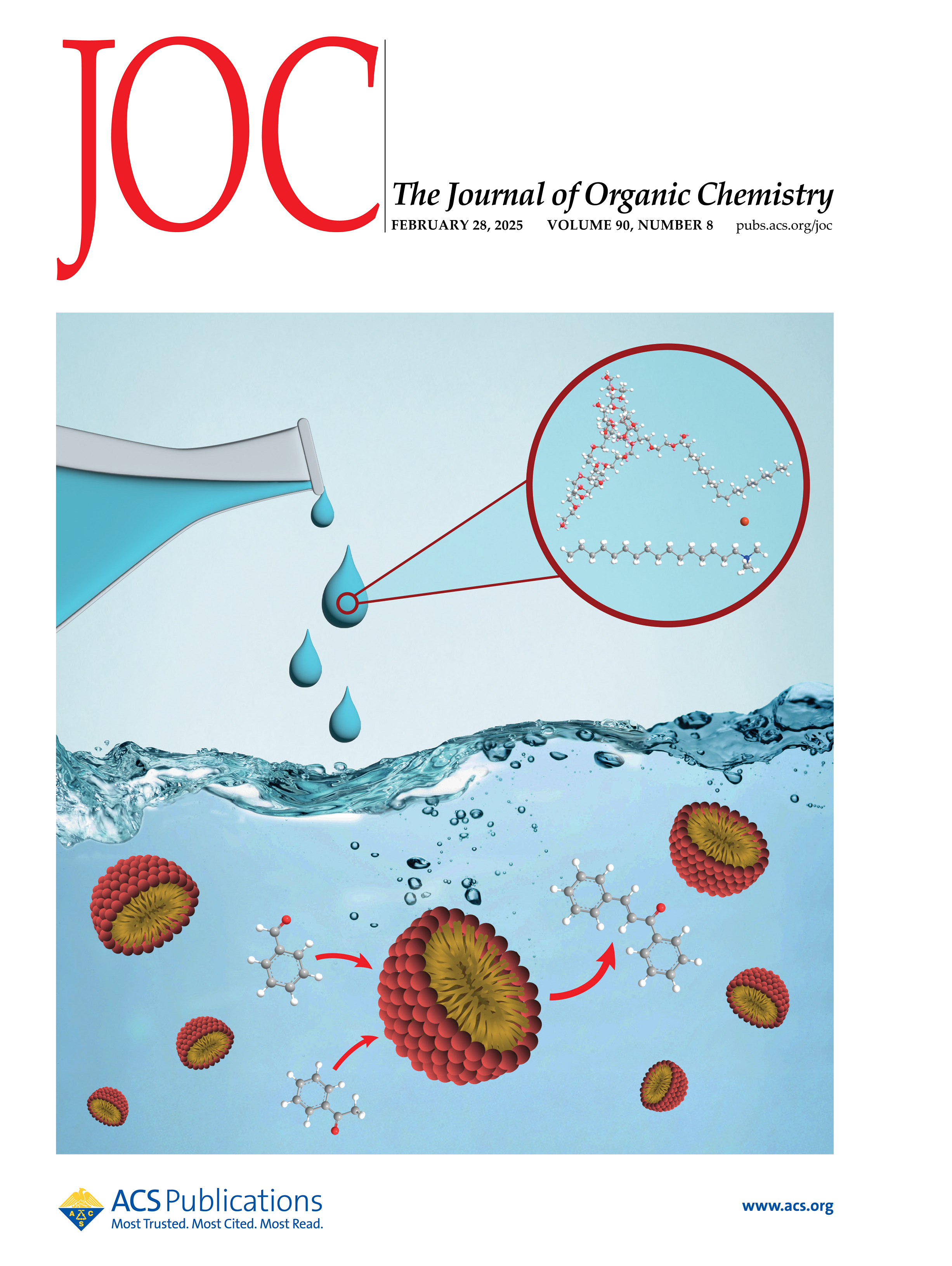
Prodotti della ricerca
Pubblicazioni Recenti
Hall K. R., Pontremoli C., Emrich-Mills T. Z., Careddu F., Bonomo M., Barolo C., Eijsink V. G. H., Bordiga S., Sørlie M. "Engineering lytic polysaccharide monooxygenases (LPMOs) for immobilisation on carbon nanotubes", Journal of Catalysis, 2025, 447, 116108. https://doi.org/10.1016/j.jcat.2025.116108
Dotta D., Gastaldi D., Fin A., Barbero N., Barolo C., Cardano F., Rossi F., Brunelli F., Viscardi G., Tron G.C., Quagliotto P. "Chalcone Synthesis by Green Claisen-Schmidt Reaction in Cationic and Nonionic Micellar Media", Journal of Organic Chemistry, 2025, https://pubs.acs.org/doi/full/10.1021/acs.joc.4c02616.
Check out our cover at this link: https://pubs.acs.org/cms/10.1021/joceah.2025.90.issue-8/asset/joceah.202...
Viada G., Mariotti N., Galliano S., Menozzi A., Barolo C., Bonomo M. "Eco-Friendly and Ready-To-Market Polyurethanes: A Design of Experiment-Guided Substitution of Toxic Catalyst and Fossil-Based Isocyanate", ChemSusChem, 2025, https://doi.org/10.1002/cssc.202402451.
Rojas-Buzo S., Pontremoli C., De Toni S., Bondar K., Galliano S., Paja H., Civalleri B., Fiorio Pla A., Barolo C., Bonino F., Barbero N. "Hafnium-Based Metal-Organic Framework Nanosystems Entrapping Squaraines for Efficient NIR-Responsive Photodynamic Therapy", ACS Applied Materials and Interfaces, 2025, 17, 524. https://pubs.acs.org/doi/10.1021/acsami.4c17018.
Reviglio C., Volpi G., Wyart E., Ciubini B., Prandi C., Barolo C., Porporato P. E., Garino C. "Imidazopyridines as fluorogenic substrates for esterase detection", Journal of Photochemistry and Photobiology A: Chemistry, 2025, 462, 116256. https://doi.org/10.1016/j.jphotochem.2024.116256.
de Alencar D. A. M., Koch G., De Rossi F., Generosi A., Ferraro G., Bonomo M., Noola S., Pellis G., Quagliotto P., Paci B., Brunetti F., Barolo C. "Phenothiazine-Modified PTAA Hole Transporting Materials for Flexible Perovskite Solar Cells: A Trade-Off Between Performance and Sustainability", Advanced Sustainable Systems, 2025, 9, 2400674. https://doi.org/10.1002/adsu.202400674.
Check out our cover at this link: https://advanced.onlinelibrary.wiley.com/cms/asset/1245abc5-0770-48e1-b4...
Castriotta L. A., De Rossi F., Bonomo M. "Game-Changers for Flexible Perovskite Solar Cells and Modules: Elastomers and Cross-Linking Molecules", ACS Energy Letters, 2025, 10, 283. https://pubs.acs.org/doi/10.1021/acsenergylett.4c02943.
Bucciol F., Quagliotto P., Tedesco L., Calcio Gaudino E., Cravotto G., Tabasso S. "Green Synthesis of Cutting-Edge Nonionic Surfactants Derived from Lignin", ACS Sustainable Chemistry and Engineering, 2025, 13, 343. https://pubs.acs.org/doi/10.1021/acssuschemeng.4c07411.
Giordano M., Cardano F., Barolo C., Viscardi G., Fin A. "Perylene-Based Dyes in Dye-Sensitized Solar Cells: Structural Development and Synthetic Strategies", Advanced Functional Materials, 2025, 35, 2411230. https://doi.org/10.1002/adfm.202411230





